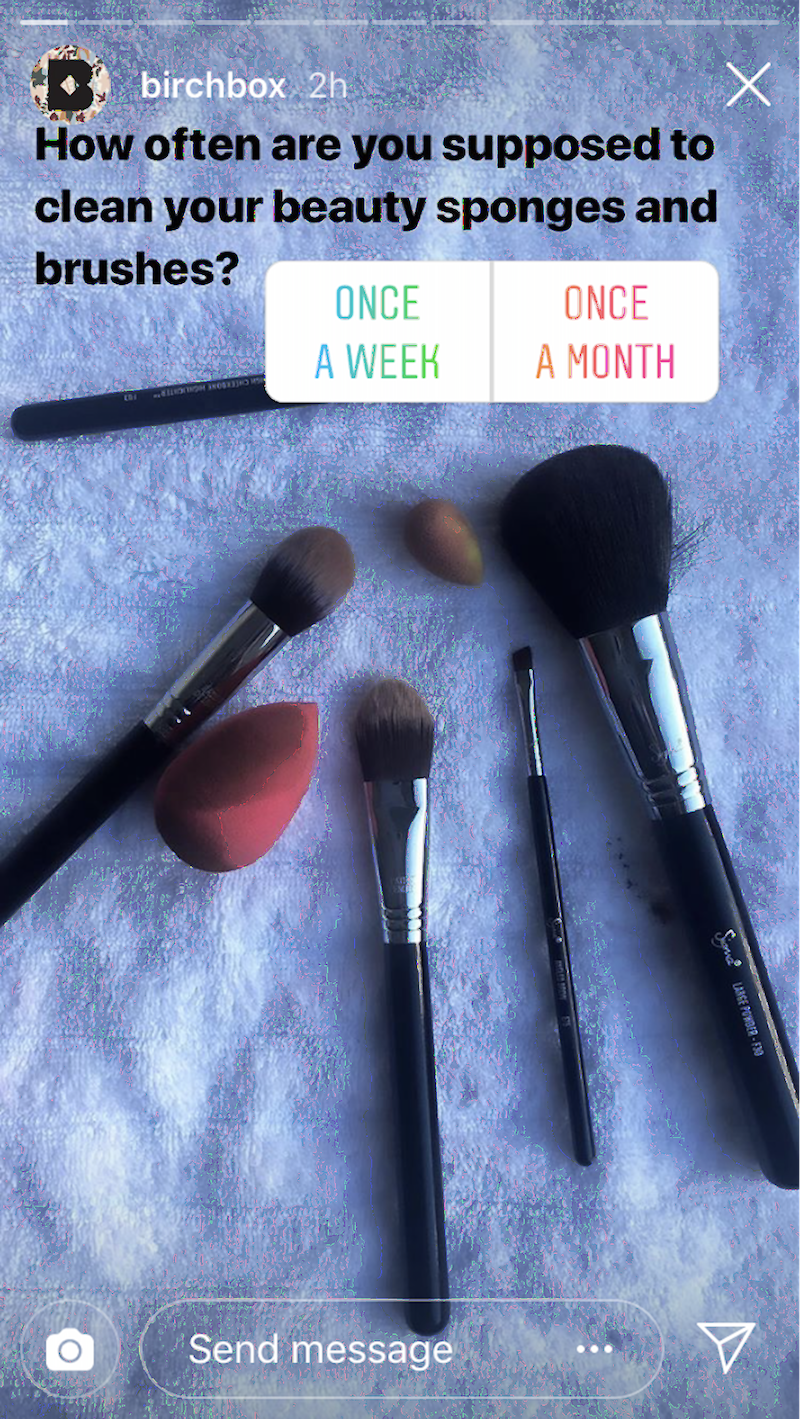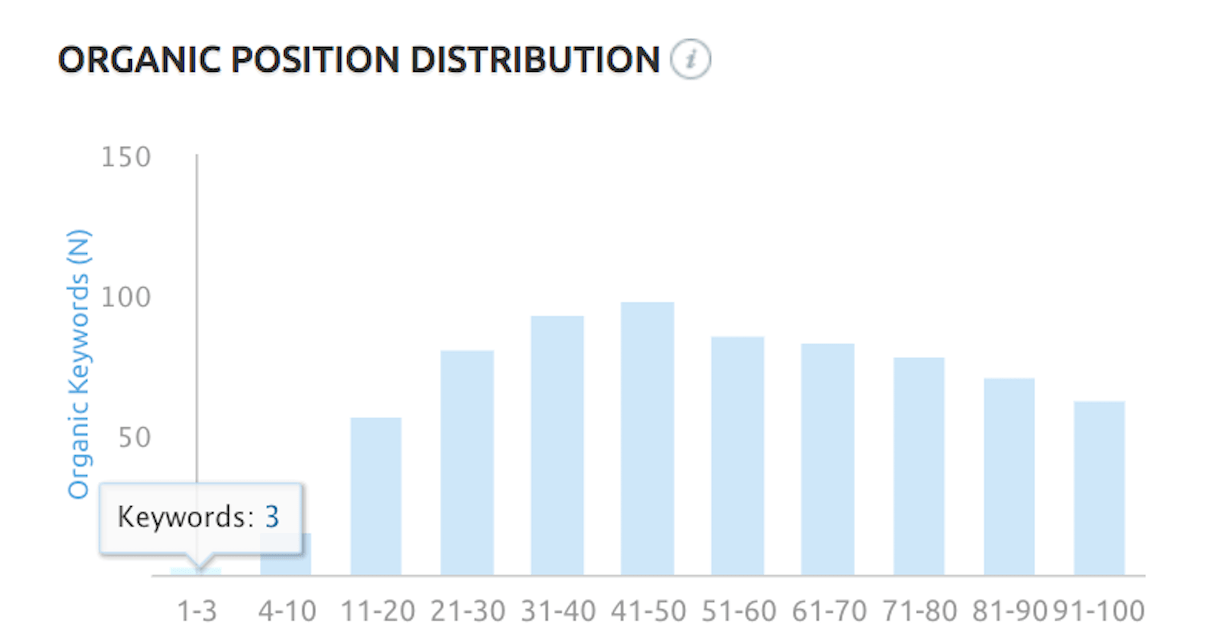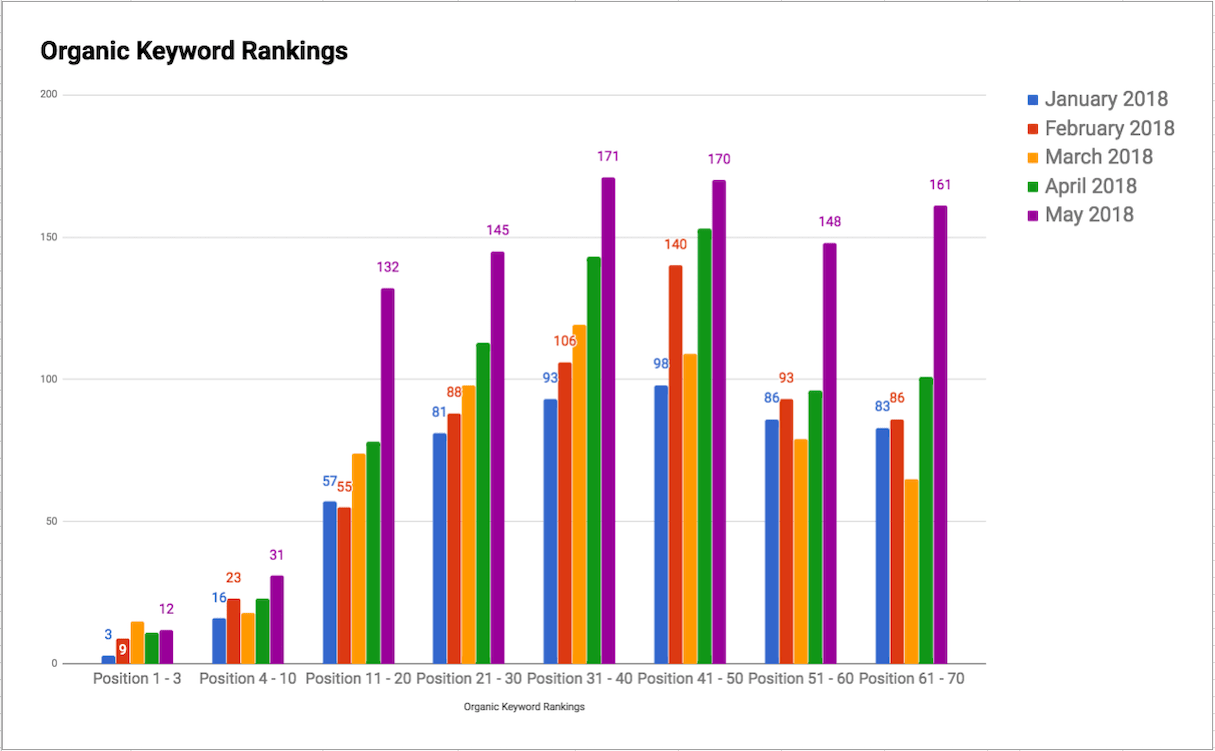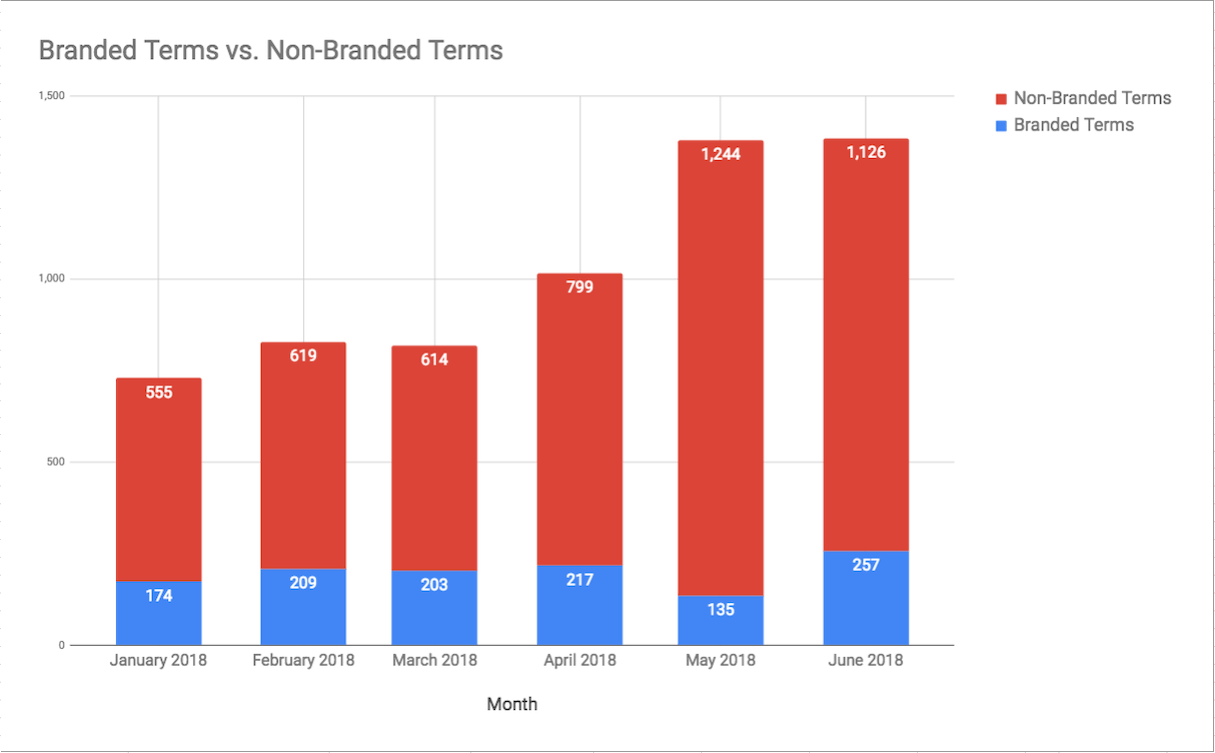In working with ecommerce clients, you’ve likely set marketing goals and KPIs together, like generating X amount of monthly organic traffic, getting 2-4 times the return from Facebook ads, and more. One of the biggest pain points for businesses working with agencies is tying the work being done to actual revenue or results.
It becomes exponentially more challenging when you’re managing multiple aspects of marketing for a client. It can be even harder to credit any specific channel to ROI—but not impossible.
Let’s take a look at SEO and paid social specifically to give some examples of how you can use and measure the impact of these two massive channels for generating traffic and revenue.
You might also like: Facebook Marketing: Six Steps to Auditing Low Performing Facebook Ads.
Use SEO and social media in tandem
Users continue to leverage Google for finding, researching and purchasing products across multiple properties like search, Google Maps, and YouTube. Google’s search engine alone accounts for more than 2 trillion searches each year. Facebook has roughly 214 million U.S users, and Instagram is estimated to have 105 million users in the U.S.
Between the millions of U.S. Google searches and millions of users on social media, these two channels have the potential to drive significant traffic and revenue to an ecommerce site. Getting them to work together can yield enormous benefits for a business.
Although it may seem like these two very different marketing channels would have different goals, SEO and social media should be treated as a unified marketing effort.
Below are 3 ways these channels can work well together.
1. Social media insights can drive SEO content strategy
For many ecommerce businesses, starting a blog presents many challenges. It takes a lot of time and effort to get blog posts published on a regular basis. You have to brainstorm topics, create the content, and publish it on your site, which means it is formatted properly with text, images, internal links, etc. All of this work may not even show results for months, since it takes time for content to rank well in Google.
Not to mention, coming up with topics that your audience would find valuable can be hard to do. Thankfully, you can find topics that will resonate with your audience by doing a few things on social. Below are some examples you can use.
Content topic identification
Create a poll or quiz on Facebook or Instagram and put a small budget ($25 or less) behind it to see if the topic gains traction from your paid efforts (likes, shares, pins, etc.). If so, you can start to create more content around the topic idea.
For example, if your client is in the beauty space like Birchbox, and you wanted to know what topics would resonate with their audience, you could create a poll asking them how they clean their makeup brushes.
Based on the level of engagement with that post, and what your client’s customers answer, you may want to create one or more posts about cleaning makeup brushes.

Content expansion ideas
If you have boosted posts before and received a bunch of likes, comments, or shares to a specific piece of content, you can repurpose that content topic and create more content such as graphics or videos, or use it to build out a larger resource.

For example, this company has great engagement on this post about their lumbar pillows. If you were their marketing agency, you could create content around how to decorate your king sized bed, dorm room, or couches using this pillow.
Or, consider a site that sells BBQ grills. You could post several recipes to their social media pages, boosting them to get more eyes on the content, and see which posts earn the highest engagement. The posts that perform best are also most likely to perform best as blog posts.
You might also like: 11 Actionable Social Media Tips for Your Web Design and Development Business.
2. Leverage paid ads to boost organic search queries
Social ads are extremely useful in the digital landscape, but you have to create ads that are compelling enough to interest customers in clicking through to the site, as well as learning more about your client’s brand.
Many consumers see an ad, click through to the website, shop around, and then leave without buying anything. Conventional wisdom says a conversion rate is between two and five percent, with a number of reasons contributing to why a customer would see your ad, click, and bounce.
However, was your ad compelling enough that consumers remember it later that day and search for your client’s business via Google? Everyone throws around terms like “brand awareness,” but how can you measure the true impact and ROI of brand awareness with your paid social? Before putting money behind paid social, you need to measure the impact it has on your branded organic visibility.
To do this, you need to use tools like SEMRush or Google’s Keyword Planner to measure the keyword landscape for your client’s brand before you start putting thousands of dollars into paid social. One way to do this is to plug their site into a tool like SEMRush to see the kind of terms they already rank for.
For example, here is the landscape for one business we worked with (name and detailers are not used, since we can’t disclose it). Looking at this, you will see they had three keywords in positions one through three of Google search, versus 53 keywords in position 11-21 (page two of Google search results) earlier this year.

The total number of terms in SEMRush this site ranked for in Google was 729 (shown in the chart above, distributed across the top 100 results). Understanding the current landscape helps you better measure what would happen once you launch a social campaign that will cost your client thousands of dollars each month.
In this example, we looked at this data from January 2018, before starting to promote the client’s business through Facebook and Instagram ads in February.
This is your baseline and a good point of reference to measure against month to month. By measuring in this way, you start to see how things are improving or declining organically from the ads you push. Here is an example of what that looked like over time:

As you layer on additional data points like branded versus non-branded terms, you start to see how the overall health of your organic traffic is being impacted by social ads.

Most clients are the same—they want results and they want them fast. Leveraging paid ads for a positive Return on Ad Spend (ROAS) is extremely useful. It shows how your overall brand is growing in awareness, which impacts the future health of the business.
Additionally, build an effective SEO strategy that increases visibility by doing the following:
- Optimize your client’s site for the right keywords
- Have clean code in the backend of the site for optimum page load speed
- Increase internal and external links
- Build robust content resources on the site
Remember, though, that it’s slow going to see results, in many cases taking between six to nine months—or even longer. Monitoring the increase in branded searches is one way to measure the lasting impact of your ads while you are setting up a longer-term SEO campaign.
Other paid ad benefits you can measure include:
- Consumers being more likely to engage and convert with a brand they’ve previously been exposed to via ads. Measured by new vs. returning consumers in your analytics tool.
- Positively impacting organic click-through rates, meaning with the right ads you could improve the click-through of branded organic search. Measured by Google Search Console keyword CTR data.
- More brand mentions, links, social shares, and general coverage, all of which boost organic rankings. Measured by setting up Google Alerts.
By knowing and measuring these results, you’re measuring the benefits and impact of paid social on brand awareness, as well as organic traffic and revenue.
You might also like: 5 Social Media Automation Tools to Help you Grow Your Business’ Online Following.
3. Using SEO-rich content to fuel your paid social
SEO-rich content is content that’s crafted around keywords and queries that your target customers are searching and that are driving visits to your client’s site. For example, imagine you’ve written an article, and it’s ranking well organically and driving traffic to your client’s site. Don’t stop there. Use that SEO-rich article to retarget those same people via paid social ads.
To figure out what content is bringing in the most visitors to your client’s site, follow these steps:
1. Log into your Google Analytics account.
2. Under reports, go to Reports > Acquisition > Traffic acquisition
3. Review channels and results under Default Channel Grouping:
 4. Take a more detailed look at your traffic through custom reports under Explore
4. Take a more detailed look at your traffic through custom reports under Explore
So let’s say your beauty company ended up making a blog post called 3 Tips for Cleaning Your Beauty Brushes and Sponges, and it is getting great traffic. Retarget the individuals that visit that post with ads promoting products like brushes and sponges, to bring them back to the site to purchase. Using retargeting ads could give you a 76 percent increase in clicks, in contrast to using regular display ads. Those clicks could potentially lead to more sales.
Use SEO and paid social to drive revenue
Successful campaigns don’t just happen; they start with a good plan. To summarize, if you want to leverage your SEO efforts with paid social and vice versa, apply some of these tactics to drive revenue for your clients:
- Coordinate your content and social media editorial calendars. Use social media (including—and especially—paid social) to promote content you publish to your website. What’s more, make note of high-performing social media posts and expand them into longer-form blog content that can generate SEO value.
-
Merge metrics and set joint goals. User engagement. Conversions. Return on investment. Your paid social advertisement data offers useful insights into how consumers engage with your client’s site and content. Seeing what paid social content is earning clicks (and converting customers) will show you what kind of content you should be creating.
- Communicate daily. If anything sticks for how to make SEO and paid social work together, it’s effective communication. You can’t approach SEO and paid search as two different silos. The greatest productivity and ability to drive traffic and revenue for a client is going to come down to getting these two entities work and communicate as one.
Take a collaborative approach to SEO and paid social by constantly communicating, using the same language in your marketing messages, targeting the same audience, and sharing information and goals. You’ll make two effective marketing channels work together to drive traffic and revenue for your clients and give them the results they ask for.
Read more
- How to Use Google Ads to Drive Traffic to Your Clients' Sites
- How to Improve Your Client's Loyalty Program with Gamification
- 8 Development Trends You Need to Know to Successfully Build for Shopify in 2022
- An Interview With BuzzFeed’s VP of Design Cap Watkins
- Simple Tricks to Increase Your Creativity
- Shopify's Web Design and Development Blog in Review: The Top 10 Articles of 2017
- 8 Conferences to Save Your New Year's Resolution
- 8 Things I Learned at Beyond The Code
- 8 Beautifully Designed Ecommerce Stores to Inspire Your Valentine’s Day
- 20 Expert Strategies to Help Overcome Creative Blocks
How have you made SEO and paid social work together for clients? Tell us your thoughts in the comments below!

